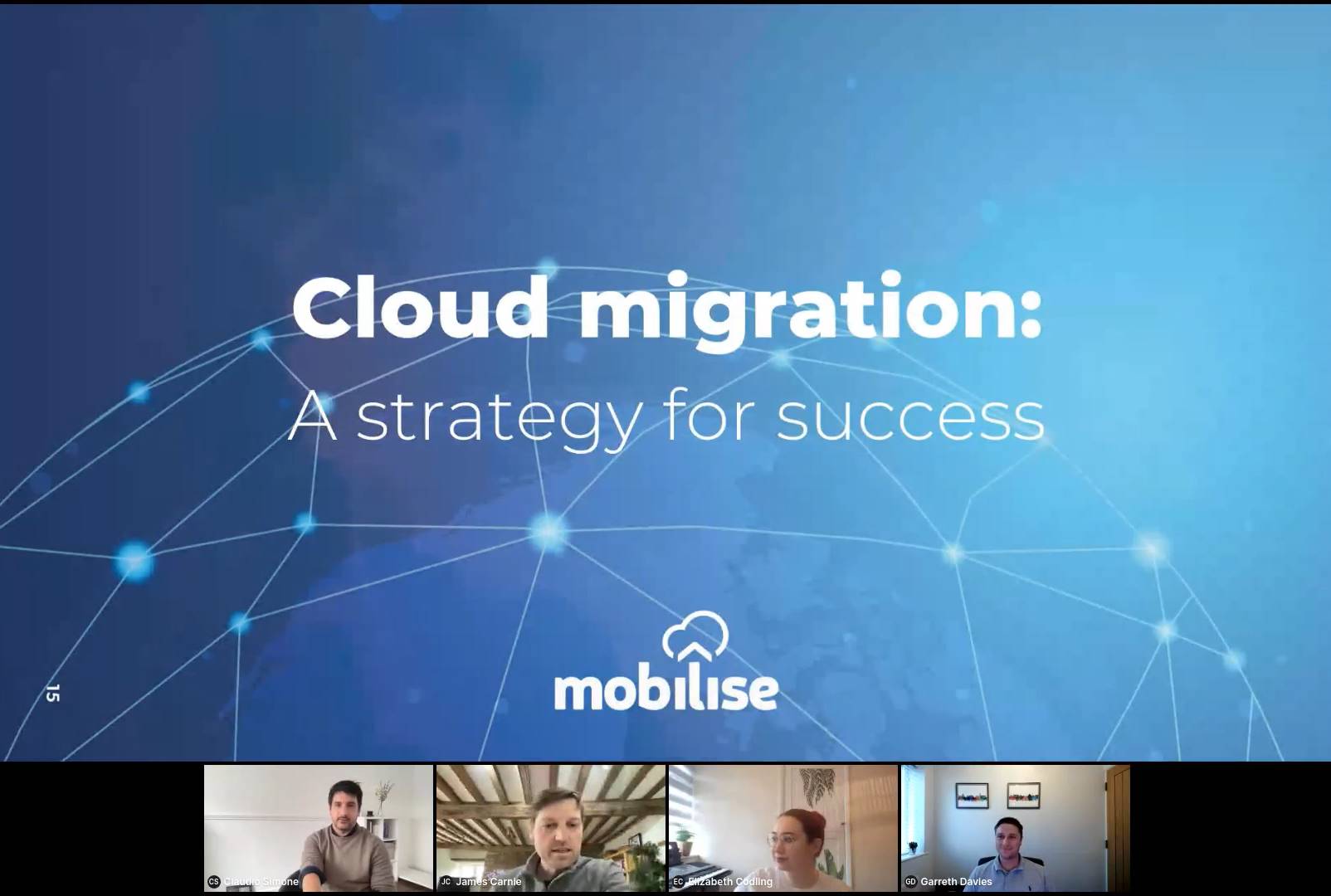At our recent webinar Cloud Migration: A Strategy for Success, we shared our insight and expertise on how to create a bespoke cloud migration strategy that works for your business and achieves results. The webinar is now available to view On Demand.
We shared findings of our latest research which reveals the extent that cloud adoption has accelerated throughout the pandemic for companies of all sizes, as they seek to put in place more agile, secure and cost-effective IT systems.
Attendees from a range of sectors shared their questions with us about the different tools and approaches and variations in cloud progress. Read on for some of the answers:
What are the different challenges for different sized businesses that you deal with?
It depends on the size of the organisation. Larger organisations tend to have complicated legacy systems, which have grown organically over many years and it can be challenging to unpick them – patch and retest them – in order to move to the cloud.
On the other end of the scale are start ups, which aren’t yet cloud native, but tend to use SaaS subscriptions, so they’re already on the cloud journey.
In the middle are scale up businesses. Over the covid pandemic we saw lots that needed to scale up their existing system, whether or not it is cloud based, but they needed to scale it. So their challenge is often achieving a certain scale.
Do you have any dedicated tooling for migrating workloads from on-premises to the cloud or are you using other tools like Azure Migrate or Compass?
We tend to use the relevant cloud provider’s suggested route for migration. For example, if we’re migrating workloads to AWS, we use the new AWS Application Migration Service. Or, if it’s Azure, then we use the Azure Migrate service. Both of those services tend to use agents that you install in your on-premise environment. Then it does a replication to the cloud and continues to carry out that replication so you can carry on testing your workloads in the cloud. They’re very simple and straightforward to use.
If the customer has connectivity issues then we’ll tend to use more traditional methods. So things like taking copies or backs ups or data exports and manually shifting those to the cloud.
What are the different approaches to migration?
Amazon describes the 7 R’s when migrating, which aim to differentiate the approaches to migration: retire, retain, relocate, rehost, repurchase, replatform and refactor. However, we focus on three of these.
First, a Rehost, which is a traditional lift and shift approach, taking what you already have and migrating that into the cloud. It is one of the quickest and cheapest approaches, but it doesn’t take advantage of all the cloud has to offer, as your applications and services don’t leverage all of the best cloud capabilities.
Then there a Replatform. This tends to be a lift and shift, but we also replatform some of those services. For example, if you’re migrating a database onto a cloud, instead of moving it onto a compute service, we would recommend replatforming it to one of the cloud’s managed data services. So the cloud provider would handle all of the patching for you, do the backups for you, and ensure the database is highly available.
Finally, we work with Refactor. This is a more involved and costly process, but you get the best results out of the migration as you completely refactor your architecture and applications to become cloud native, and take advantage of everything the cloud has to offer. In the long run, this will be the cheapest solution to run your services in the cloud as you can scale up and down your services.
Were the results of the survey you commissioned into cloud adoption what you expected?
The research commissioned by Mobilise showed that 83% of companies are in the cloud to some extent. Of these, over half (29%) said their IT systems were cloud-native.
A further 8% of the total companies surveyed were planning to migrate to the cloud in the next 12 months.
These results were pleasantly surprising, showing how highly organisations rated themselves in terms of cloud maturity.
Covid, and home-working, was likely to have driven growth in cloud adoption. While there are clearly many early adopters, there are also lots with a long way to go.
Did your survey show a consistent picture for cloud adoption across the UK?
The survey, which spanned 603 small, medium and large UK companies across multiple sectors, showed huge geographical variation.
For example, 34% of London firms surveyed said their IT systems were cloud-native, whereas this fell to 19% in the North East of England.
As well as regionally, we found results varied depending on the size of the company and their sector.
See our full report on cloud adoption, which provides more insight from the survey.
Ready to start discussing your organisation’s enterprise-level platform development or cloud transformation? Get in touch by calling 0345 054 2560 or contacting us at info@mobilise.cloud
Resources
- Watch the replay of the cloud adoption webinar
- See our full report on cloud adoption, which provides more insight from the survey.
Watch this webinar
If you’d like to watch the replay of the webinar right now, simply email us.
See the findings of our latest research investigating cloud progress across the UK.



